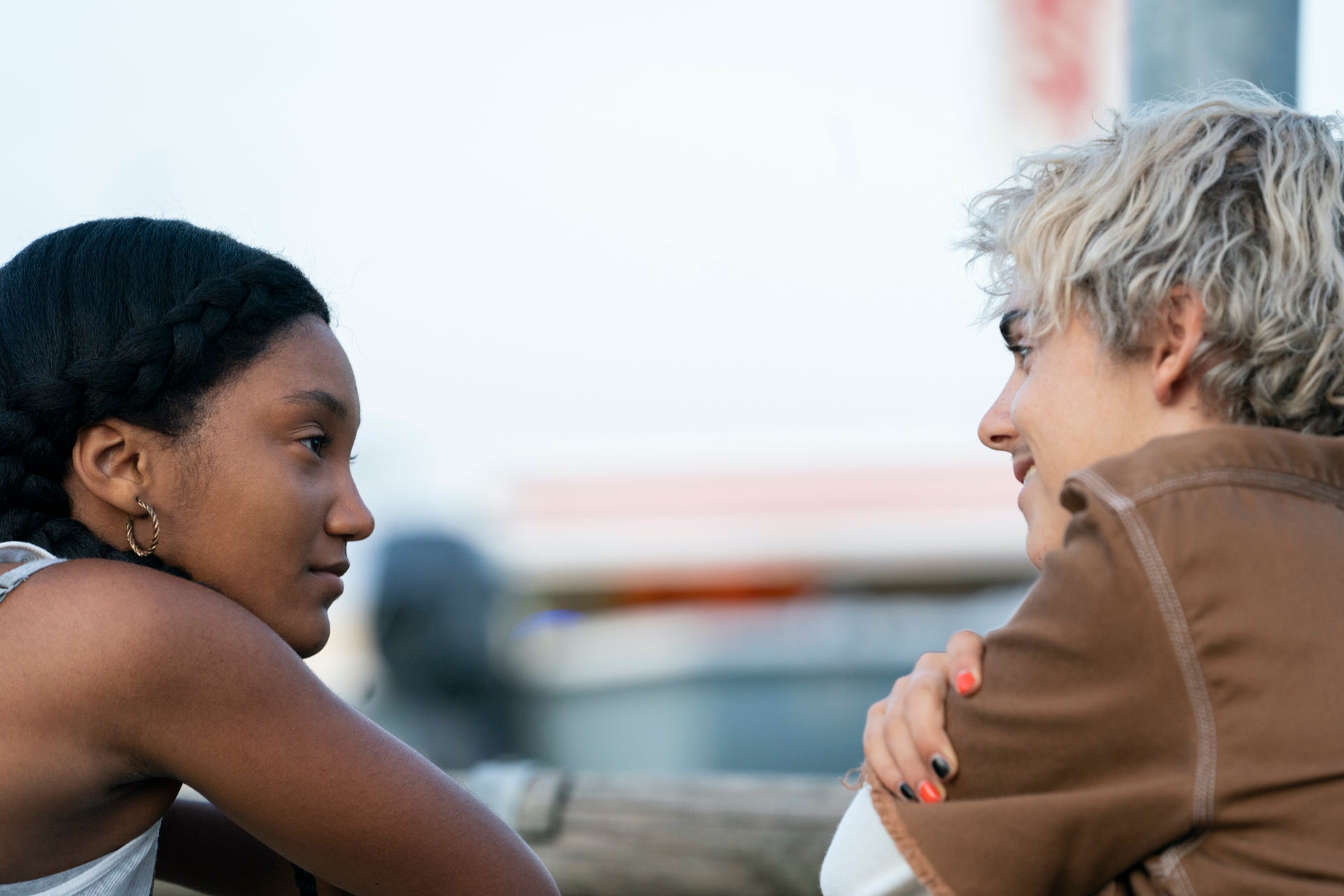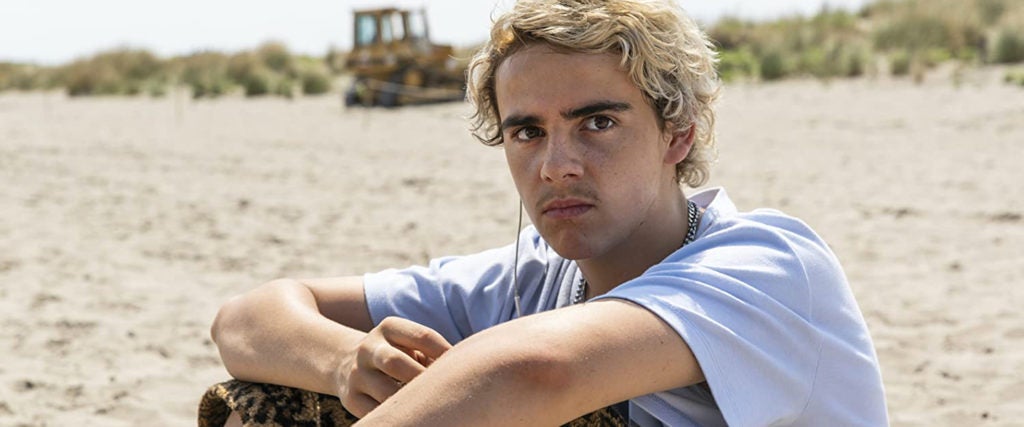What’s beautiful about being a teenager is that it doesn’t last — and by the time you find that out, you’re too old and it’s too late. It’s very easy to romanticize your adolescence, a period where you discover so many firsts — first crush, first kiss, first love, first heartbreak — that lay the emotional foundation for so many of the relationships you’ll have the rest of your life. Viewed with hindsight, your teen years are this wonderfully naive period where everything seemed possible before adulthood started to impose limitations on the person you could be. No wonder people get nostalgic about being young: It’s a state of mind as much as a time of life.
Television is filled with programs about teens — everything from Euphoria to 13 Reasons Why presents itself as a snapshot of What the Youth Are Up To Today — but there’s always room for one more, especially one with the languid fragility of Luca Guadagnino’s We Are Who We Are. HBO only made the first four (out of eight) episodes available to critics, and even so, I couldn’t give you a great sense of what happens in this series or where it’s going. But as a sense memory of adolescence, the show is astute about teendom’s transient nature. What we’re seeing feels so ephemeral, yet so potent, because both are true about being young. We Are Who We Are could end after four episodes or go on forever. That’s what being a teenager felt like — especially now when it feels so long ago.
Guadagnino is the Oscar-nominated director behind I Am Love and the 2018 remake of Suspiria, but his HBO series most closely recalls Call Me by Your Name, which like We Are Who We Are is set during a hot, sticky summer in Italy. It’s 2016 and the action takes place mostly at and around an American army base close to Venice. There are two central teen characters, but Guadagnino occasionally moves them to the side so he can focus on their friends or their parents. Mostly, We Are Who We Are just drifts, leaving you with the impression that whatever captures his camera’s attention at that moment will suddenly become the most important thing on the show. Like its title implies, there’s a defiant nonchalance to the proceedings. But what nobody in the show realizes is that this blasé bliss won’t last forever. The poignancy that girds each episode comes from the fact that we, the viewer, see the end in sight, even if the characters can’t.
Jack Dylan Grazer plays Fraser, who’s just moved to the base with his parents: Sarah (Chloë Sevigny), who’s to be the new commander, and Maggie (Alice Braga), her wife. Fraser hates it here — he misses their life in New York — but the truth is, he seems to hate everything. At first, he comes across as your typically rebellious, snotty teenager, but the more time we spend with Fraser, the more apparent it becomes that he suffers from some range of emotional and/or psychological issues. He has panic attacks. He acts out violently, at one point striking Sarah. His moms take it all in stride — clearly, they’ve gone through all this before with him — but the level of his moodiness is nonetheless alarming.
Fraser doesn’t immediately hit it off with the other young people on the base — they’re a cliquish group — but he eventually finds a group of pals, which includes Caitlin (newcomer Jordan Kristine Seamón), who’s lived there for a while, even though her mother (Faith Alabi) still informs her of what the weather’s like in Chicago, presumably the city where they were last stationed. Guadagnino weaves in and out of different locales at the base, giving us the impression that such military outposts are in a weird perpetual limbo state. Officers come and go. Soldiers are there, but are then shipped somewhere else. (Some are sent off to war zones.) Whether it’s the warm weather, the base’s nomadic residents or the main characters’ teenage circumstance, We Are Who We Are suggests that nothing we see is indefinite; everything will eventually change. And so what Guadagnino seems to be doing is creating a permanent record. Perhaps that’s why each episode is titled “Right Here, Right Now.” That’s all Fraser and Caitlin can hang onto.

In several of his films, Guadagnino has superbly fused eroticism and summertime. His characters wear next to nothing, intoxicated by the warm sun and the freedom of being outside. Sexual desire is as thick as the humidity in Guadagnino’s work, and that’s especially true of We Are Who We Are, in which the possibility of hooking up always hangs in the air. Casual nudity is everywhere in the series: Early on, Fraser wanders into the male soldiers’ communal shower, the young man calmly taking in the sight of their penises as the soldiers look back at him unembarrassed. Fraser hasn’t entirely decided on his sexuality — he pines for a boy back home but isn’t prepared to limit himself to being homosexual — and so when he starts spending a lot of time with Caitlin, it’s not clear to anyone (including the two of them) if they’re dating or just friends. That sort of unfussy fluidity permeates We Are Who We Are. The peripheral characters flirt, experiment, mess around, have sex, wander wherever their libidos and curiosities take them. It’s a portrait of teendom that very few of us actually experienced, one in which there weren’t rules and just about anything could happen. They don’t realize that life won’t always be like this.
And while that sounds utopian, Guadagnino (who turned 49 last month) is wise enough to know that even seeming paradises are an illusion. Some on the base aren’t too comfortable with Sarah as the new commanding officer — that she’s a lesbian only adds to their wariness. It’s a pretty racially diverse environment, but that doesn’t mean that individuals don’t still feel left out. Although Caitlin is easygoing and friendly, whereas Fraser is abrasive and willfully strange, she seems just as alienated and cut off. She’s the type of teenager for whom “aloof” or “sullen” isn’t quite right, although you’d be in the ballpark. There’s something ineffable she’s missing, despite having a group of friends around her. Maybe that thing she needs is Fraser, although after four episodes, what exactly they mean to each other remains vague.
In many ways, the floating, noncommittal narrative arc of We Are Who We Are suggests a dreamlike state — or a random collection of anecdotes compiled long after the actual events occurred. At the start of one episode, two supporting characters impulsively decide to get married — because why not? — and so the rest of the hour is devoted to the event, even though their friends aren’t convinced this wedding is a good idea. What matters is that they all want to party, and so they travel to an abandoned home nearby, complete with a pool, that they proceed to trash over a day and night. Guadagnino has no judgment about that, or the characters’ marriage, or anything else. He’s merely observing a fragment of time and preserving the emotional experience, as opposed to worrying about plot points or even character development. As a result, there’s a purity to the show’s wistful, not-quite-there storytelling. We Are Who We Are is all about atmosphere — the carefree bigness of being young and free.

The only intentional element of the show appears to be its specific time frame. Because it’s set during the summer of 2016, we occasionally see a speech from Donald Trump or Hillary Clinton on a TV, and we’re reminded that, many miles away, the U.S. presidential campaign is underway. Because there’s so little forward momentum in We Are Who We Are, I wouldn’t want to predict what’s going to happen, but I wouldn’t be surprised if the election ends up serving as a grim counterpoint to the lovely reverie at the show’s center.
A couple decades ago, part of the potency of Jack and Rose’s passion in Titanic was our knowledge that disaster was looming — they couldn’t possibly anticipate how brief their love affair would be. But whether Trump’s victory is the metaphorical iceberg in Guadagnino’s series, those brief campaign cutaways snap us out of the dream and back into real life. And so you watch We Are Who We Are as it meanders and digresses because you want to stay in its world a little longer. Trump or no Trump, teendom ends and reality beckons. It’s too late for the rest of us, but Fraser and Caitlin are still there right here, right now.

